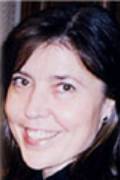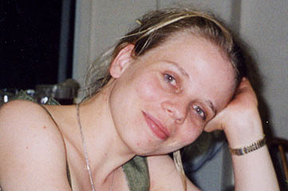
Tatyana Pestova, PhD
Assistant Professor
- PhD: Biochemistry 1992, Moscow State University
- D. Dc.: Molecular Biology 2002, Moscow State University
Research in our laboratory is concerned with the mechanism of translation initiation in higher eukaryotes. This process involves the coordinated action of >10 eukaryotic initiation factors (eIF) that sequentially assemble initiator tRNA, a 40S ribosomal subunit, messenger RNA and a 60S ribosomal subunit to form a translation initiation complex. We are using biochemical and molecular biological approaches to investigate this process. Translation initiation begins with assembly of a 43S preinitiation complex from initiation factor eIF3, an [eIF2-initiator tRNA-GTP] ternary complex and a 40S ribosomal subunit. The ribosomal 43S complex then binds to the capped 5'-end of a mRNA and scans downstream on the 5' nontranslated region to locate the initiation codon, where it forms a 48S initiation complex with an established codon-anticodon interaction. At the final stage of initiation, the 48S complex and a 60S subunit join to form an 80S ribosome that is competent to synthesize the first peptide bond.
We have identified essential roles for eIF1 and eIF1A in ribosomal scanning and initiation codon selection (Pestova et al., Nature 1998). These factors enable the 43S complex to enter the processive mode of scanning, and eIF1 plays a key role in initiation codon selection, enabling 43S complexes to recognize and reject mismatches between the anticodon of initiator tRNA and non-cognate codons (Pestova and Kolupaeva, Genes & Development, 2002). We are currently investigating the molecular mechanism by which eIF1 performs its role in ensuring the fidelity of initiation codon selection.
Assembly of active 80S ribosomes involves hydrolysis of eIF2-bound GTP induced by eIF5, displacement of eIF2/GDP and other factors from the 40S subunit and finally joining of a 60S ribosomal subunit to the 40S subunit-initiator tRNA complex. We have determined that the subunit-joining step requires a second novel initiation factor, termed eIF5B, that is a homologue of prokaryotic initiation factor IF2 and like IF2 has a ribosome-stimulated GTPase activity (Pestova et al., Nature 2000). The GTPase activity of eIF5B is required for its own release from the assembled 80S ribosome. We are currently investigating the mechanism of displacement of initiation factors from the 48S complex, the functional role of eIF5B in the subunit joining process as well as its interaction with the 80S ribosome and the mechanism by which the ribosome triggers eIF5B's GTPase activity.
- Pestova TV & CUT Hellen. 2003. Factor requirements for translation elongation after initiation at the A site on the Cricket paralysis virus internal ribosomal entry site. Genes and Development: 17:181-6.
- Marintchev A, Kolupaeva VG, TV Pestova and G Wagner. 2003. Mapping the binding between the human translation initiation factors eIF1A and eIF5B: new interaction between old partners. Proceedings of the National Academy of Science USA: 100:1535-1540.
- Pestova TV and VG Kolupaeva. 2002. The roles of individual eukaryotic translation initiation factors in ribosomal scanning and initiation codon selection. Genes and Development 16: 2906-2922.
- Pestova TV, IB Lomakin, JH Lee, SK Choi, TE Dever & CUT Hellen. 2000. The joining of ribosomal subunits in eukaryotes requires eIF5B. Nature 403: 332-335.
- Pestova TV, SI Borukhov & CUT Hellen. 1998. Eukaryotic ribosomes require initiation factors 1 and 1A to locate initiation codons. Nature 394: 854-859.
Research Scientist

Recent Publications
- Kolupaeva VG, IB Lomakin, TV Pestova, CUT Hellen. 2003. Eukaryotic initiation factors eIF4G and eIF4A mediate conformational changes downstream of the initiation codon of the Encephalomyocarditis virus internal ribosomal entry site. Molecular and Cellular Biology 23: 687-98.
- Marcotrigiano J, IB Lomakin, N Sonenberg, TV Pestova, CUT Hellen & SK Burley. 2001. A conserved HEAT domain within eIF4G directs assembly of the translation initiation machinery. Molecular Cell 7: 193-203.
- Pestova TV, VG Kolupaeva, IB Lomakin, EV Pilipenko, IN Shatsky, VI Agol & CUT Hellen. 2001. Molecular events in initiation of translation in eukaryotes. Proceedings of the National Academy of Science USA 98: 7029-36.
- Lomakin IB, CUT Hellen and TV Pestova. 2000. Physical association of eIF4G with eIF4A strongly enhances binding of eIF4G to the internal ribosomal entry site of encephalomyocarditis virus and is required for internal initiation of translation. Molecular and Cellular Biology: 20: 6019-6029.
Anett Unbehaun, M.D., PhD
Research Scientist

Recent Publications
- Nuszkowski A, Grabner R, Marsche G, Unbehaun A, Malle E, Heller R. 2001. Hypochlorite-modified low density lipoprotein inhibits nitric oxide synthesis in endothelial cells via an intracellular dislocalization of endothelial nitric-oxide synthase. Journal of Biological Chemsitry 276:14212-21.
- Heller R, Unbehaun A, Schellenberg B, Mayer B, Werner-Felmayer G, Werner ER. 2001. L-ascorbic acid potentiates endothelial nitric oxide synthesis via a chemical stabilization of tetrahydrobiopterin. Journal of Biological Chemsitry 276:40-7.
Irina Lomakina, MSc
Research Technician


Professor Gerhard Wagner (Dr. Assen Marintchev)
Dept. of Biological Chemistry & Molecular Pharmacology
Harvard Medical School, Boston, MA
Academician VI Agol, PhD, DSc
Inst. of Poliomyelitis & Viral Encephalitides
Russian Academy of Medical Science, Moscow Region 142782 RUSSIA
Dr. Thomas E. Dever
Section on Protein Biosynthesis, Laboratory of Eukaryotic Gene Regulation,
National Institute of Child Health and Human Development,
National Institutes of Health, Bethesda, MD
Dr. Matthias Hentze (Karsten Beckmann, graduate student)
Gene Expression Programme,
European Molecular Biology Laboratory, Heidelberg, GERMANY
Professor Nahum Sonenberg (Ann Brasey, graduate student)
Dept. of Biochemistry
McGill University, Montreal, Quebec, Canada
Professor Marin van Heel (Dr. Tillman Pape)
Department of Biochemistry
Imperial College of Science, London, United Kingdom
Professor Christopher Hellen (Dr. Victoria Kolupaeva)
Department of Microbiology and Immunology,
State University of New York Downstate Medical Center, Brooklyn, NY 11203
Professor Ivan N. Shatsky (Daria Sizova, graduate student)
A.N. Belozersky Institute of Biophysical Chemistry,
Moscow State University, Moscow, RUSSIA
Professor Richard Jackson (Simon Fletcher, graduate student)
Dept. of Biochemistry,
University of Cambridge, Cambrdige CB2 1QW UNITED KINGDOM
Dr. Peter Sarnow (Dr. Joan Wilson)
Dept. of Microbiology & Immunology
Stanford University School of Medicine, Stanford, CA 94305
Dr. Stephen Burley (Joe Marcotrigiano, graduate student)
Center for Biochemistry and Structural Biology
The Rockefeller University, New York NY 10021